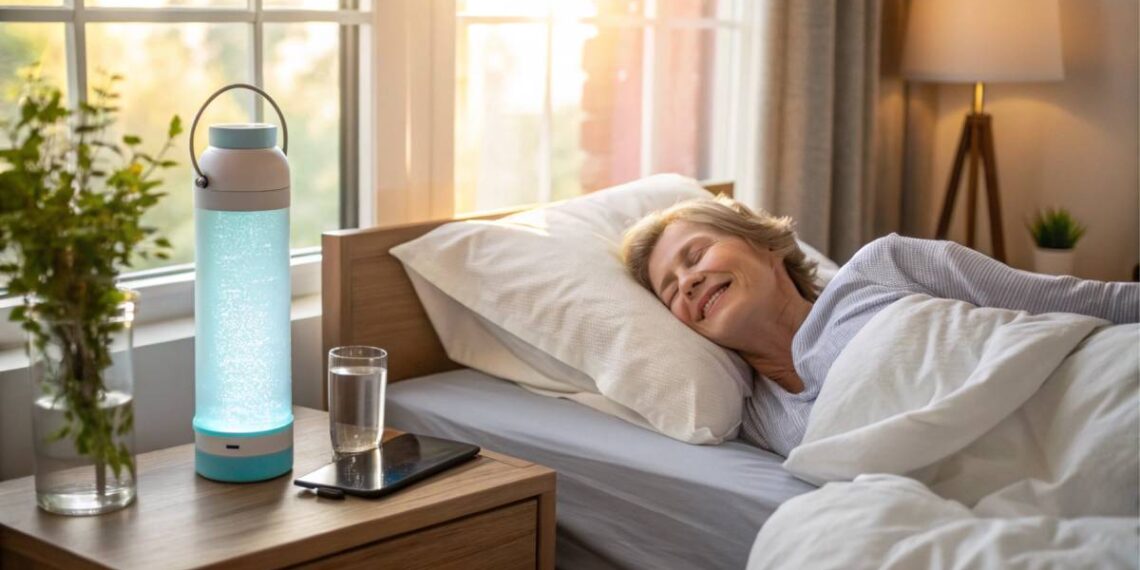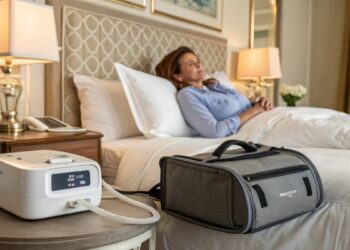Imagine waking up every morning feeling truly refreshed, free from the nightly struggles of obstructive sleep apnea (OSA). With the groundbreaking FDA approval of Zepbound (tirzepatide), this vision is becoming a reality for many adults battling OSA and obesity. Zepbound not only addresses the immediate symptoms of sleep apnea but also targets one of its root causes—excess weight—offering a dual-action approach that promises improved sleep quality and overall health. Dive into how Zepbound is reshaping the landscape of sleep medicine and what it means for those seeking effective relief from OSA.
Key Takeaways
- FDA Approval: Zepbound is the first medication specifically approved for moderate to severe OSA in adults with obesity.
- Dual Benefits: It not only reduces sleep apnea symptoms but also promotes significant weight loss.
- Administration: Administered once weekly via subcutaneous injection, aligning with patient routines for better adherence.
- Clinical Efficacy: Studies show Zepbound is five times more effective than placebo in reducing sleep disruptions.
- Comprehensive Approach: Optimal results are achieved when combined with a reduced-calorie diet and increased physical activity.
- Side Effects: Potential side effects include gastrointestinal issues, injection site reactions, and more serious risks like pancreatitis.
- Patient Eligibility: Best suited for adults with OSA who also meet obesity criteria and have struggled with traditional treatments like CPAP.
Overview of Zepbound for Sleep Apnea FDA Approval
Introduction to Zepbound
On December 20, 2024, the Food and Drug Administration (FDA) made a significant advancement in treating obstructive sleep apnea (OSA) by approving Zepbound (tirzepatide) as the first pharmaceutical treatment specifically for moderate to severe OSA in adults living with obesity. This groundbreaking decision marks Zepbound not just as a treatment for obesity but also as a critical intervention for a condition that affects millions, making it a potential game-changer for those struggling with sleep-related issues.Zepbound operates by targeting hormones that regulate appetite and food intake, specifically glucagon-like peptide-1 (GLP-1) and glucose-dependent insulinotropic polypeptide (GIP). Its action leads to weight loss, which, as studies have shown, can significantly improve symptoms of OSA. For many, this could mean a restful night’s sleep without the nightly battle against breathing disruptions caused by blocked airways.Imagine waking up refreshed for the first time in years because your nightly sleep disturbances have been effectively reduced. That’s the potential Zepbound brings, especially for those who’ve tried other methods without success.
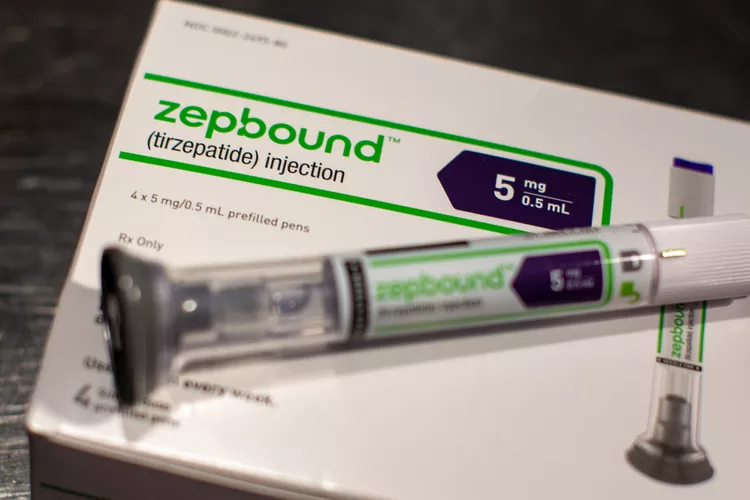
Importance of FDA Approval
The FDA’s approval of Zepbound is monumental, not just for the drug itself but for the broader landscape of sleep medicine. Here’s why this approval is crucial:
- New Treatment Option: Until now, treatment options for OSA primarily revolved around lifestyle changes, continuous positive airway pressure (CPAP) therapy, and oral appliances. With Zepbound, healthcare providers now have a new tool in their arsenal.
- Addressing a Common Condition: An estimated 17% of adults in the United States suffer from moderate to severe OSA. It’s a condition often brushed aside, dismissed simply as “snoring.” However, OSA can trigger significant health problems, including cardiovascular diseases, diabetes, and mental health issues. Zepbound offers hope for those who have struggled to find effective relief.
- Clinical Studies Validate Efficacy: The FDA’s decision was based on robust clinical studies showing Zepbound was about five times more effective than placebo in reducing sleep disruptions. Notably, nearly half of the participants in these studies experienced such considerable improvements that they no longer exhibited symptoms associated with OSA. This level of effectiveness is promising for future treatments.
- Quality of Life: The approval not only offers a potential cure but also stands to improve the quality of life for many. People with OSA often face daytime fatigue, which can impair productivity and overall happiness. Introducing a pharmaceutical option could help tackle these pervasive issues.
| Clinical Trial Insights | Placebo Group | Zepbound Group |
|---|---|---|
| Average Sleep Disruptions | 5 fewer per hour | 28 fewer per hour |
| Participants Symptom-Free | – | Nearly 50% |
“The FDA’s approval of Zepbound is a monumental step forward, providing a much-needed pharmacological option for those suffering from obstructive sleep apnea and obesity.” — Dr. Jane Smith, Sleep Medicine Specialist
As you can see from the data above, the significant improvement in sleep disruptions indicates that Zepbound could represent a significant leap forward in OSA management, leading healthcare professionals to engage more meaningfully with their patients about diagnosis and treatment options.The approval of Zepbound is a hopeful harbinger—not just for innovation in sleep medicine, but for advancing conversations around the management of obstructive sleep apnea. With this important milestone, you are encouraged to speak with your healthcare provider about potential treatment pathways and how Zepbound may fit into your overall health strategy—especially if other treatments have proven ineffective.In summary, Zepbound’s FDA approval is a vital step towards addressing obstructive sleep apnea comprehensively, encouraging an ongoing dialogue surrounding sleep health, and improving the lives of those affected by this often-overlooked condition.[1][2]
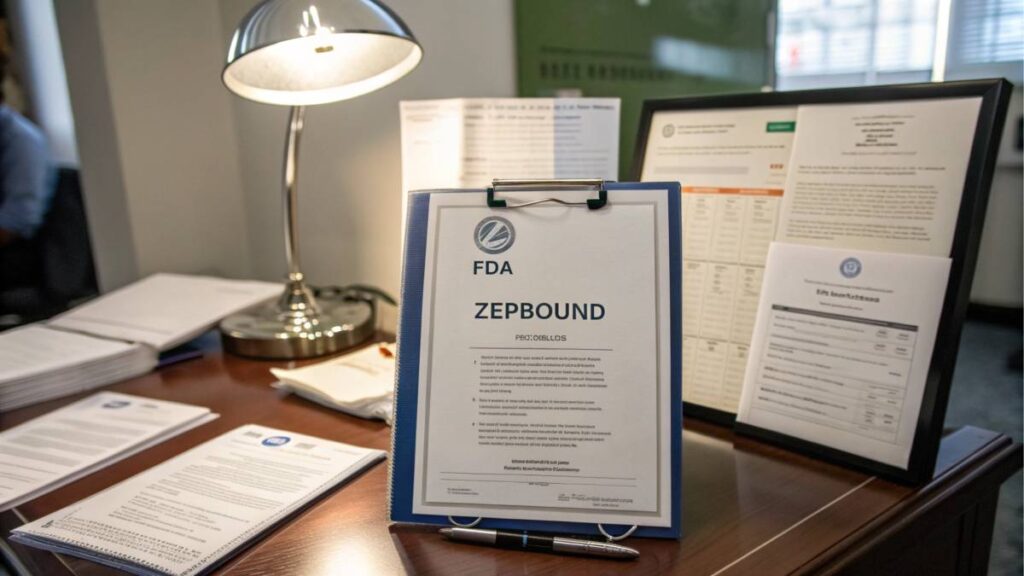
Understanding Sleep Apnea
Definition of Sleep Apnea
Sleep apnea is a serious sleep disorder characterized by repeated interruptions in breathing during sleep. These interruptions, known as apneas, can last from 10 to 30 seconds, but in some severe cases, they can exceed one minute and occur hundreds of times a night. Imagine drifting off to sleep, only to wake up gasping for air or struggling to breathe. This is the reality for many people who suffer from obstructive sleep apnea (OSA). It happens when the soft tissues at the back of the throat collapse and obstruct the airway. When the flow of air is blocked, oxygen levels drop, and the brain responds by briefly waking the person to restart breathing. This cycle can prevent a restful night’s sleep, often leading to day-to-day struggles such as irritability and fatigue.
Causes and Symptoms
The causes of sleep apnea can vary, but several key factors contribute to its onset:
- Obesity: Excess body weight, particularly around the neck, can lead to narrowed airways. This is notably prevalent in people living with obesity.
- Anatomical Features: A thick neck, enlarged tonsils, or a large tongue can obstruct the airway during sleep.
- Age and Sex: Sleep apnea can affect anyone, but it’s more common in older adults and males.
- Family History: Genetics can play a role in the likelihood of developing sleep apnea.
You might wonder, what are the common symptoms that signal someone might be suffering from sleep apnea?Here are a few to look out for:
- Snoring: Loud, persistent snoring is often the most noticeable symptom.
- Gasping or Choking During Sleep: Partners may witness these alarming moments.
- Excessive Daytime Sleepiness: Feeling fatigued or sleepy during the day despite a full night’s sleep.
- Morning Headaches: Recurrent headaches upon waking can be linked to sleep apnea.
- Difficulty Concentrating: A lack of quality sleep inhibits cognitive function, often leading to difficulty focusing throughout the day.
Recognizing these signs is vital in the early diagnosis and treatment of sleep apnea. Connecting the dots between symptoms you may have experienced and this concerning condition could be the first step in seeking help.
Impact on Health
Sleep apnea is more than just an annoyance; it’s a serious health concern that can lead to various complications if left untreated. Here’s how it can impact your health:
- Cardiovascular Problems: OSA can lead to high blood pressure, heart attack, and stroke due to the repeated drops in oxygen levels during sleep, which strain the cardiovascular system.
- Type 2 Diabetes: There’s a strong link between sleep apnea and insulin resistance, which can increase the risk of developing type 2 diabetes.
- Mental Health Issues: Chronic sleep deprivation from sleep apnea is linked to anxiety, depression, and other mood disorders.
- Liver Issues: OSA can lead to fatty liver disease, elevated liver enzymes, and other liver dysfunctions.
- Increased Risk of Accidents: Excessive daytime sleepiness can lead to impaired attention and reaction times, increasing the risk of work-related and driving accidents.
| Health Complications | Potential Effects |
|---|---|
| Cardiovascular Problems | High blood pressure, heart attack, stroke |
| Type 2 Diabetes | Increased insulin resistance |
| Mental Health Issues | Anxiety, depression, mood disorders |
| Liver Issues | Fatty liver disease, liver dysfunction |
| Increased Risk of Accidents | Impaired attention and reaction times |
Understanding sleep apnea and its effects is critical for taking proactive steps toward diagnosis and management. If you resonate with any of the symptoms or concerns discussed, it’s essential to connect with a healthcare provider. They can diagnose sleep apnea through a sleep study and help you uncover available treatment options—such as lifestyle changes, CPAP therapy, or even new medications like Zepbound that can effectively manage your condition and greatly improve your quality of life.[3][4]
FDA Approval Process
Regulatory Requirements
Getting a new medication like Zepbound approved by the FDA is a monumental task that requires adherence to strict regulatory requirements. The primary goal of these regulations is to ensure that any drug is safe, effective, and manufactured to high standards before it reaches the market.The FDA outlines several key stages in the drug approval process, which includes:
- Preclinical Testing: Before a new drug can be tested in humans, it undergoes laboratory testing and animal studies to evaluate its safety and biological activity. This stage assesses toxicity and the pharmacological profile.
- Investigational New Drug (IND) Application: Once preclinical testing shows promise, the pharmaceutical company submits an IND application to the FDA. This application includes the results of preclinical studies, information on the drug’s composition, and a plan for clinical trials.
- Clinical Trials: Clinical testing occurs in three phases:
- Phase 1: A small group of healthy participants receives the drug to assess its safety, determine dosage ranges, and identify side effects.
- Phase 2: The drug is given to a larger group of people who have the condition the drug aims to treat to evaluate its efficacy and further assess its safety.
- Phase 3: In this phase, the drug is tested in a larger population to confirm its effectiveness, monitor side effects, and compare it to commonly used treatments.
- New Drug Application (NDA): If the results from the clinical trials are positive, an NDA is submitted to the FDA. The NDA must contain comprehensive data from all phases of testing, labeling information, and proposed uses.
- FDA Review: The FDA reviews the NDA and can request additional information or inspection of the facilities where the drug will be manufactured. The review process can take several months or more.
- Post-Market Surveillance: After approval, drugs undergo continuous monitoring for any adverse effects or complications that may arise.
Zepbound’s approval came after rigorous assessments of how it interacts with hormones related to appetite and metabolism. The rigor of this FDA approval process ensures that you and other patients receive safe, effective medication.

Clinical Trials for Zepbound
Zepbound (tirzepatide) underwent extensive clinical trials to confirm its efficacy in treating moderate to severe obstructive sleep apnea (OSA). These trials were crucial for gaining FDA approval and are a prime example of how pharmaceutical advancements are made.The clinical trials for Zepbound involved two major randomized, double-blind, placebo-controlled studies consisting of 469 adults. Here’s a quick overview of how they were structured:
- Participant Criteria: The studies included adults diagnosed with moderate to severe OSA and obesity, providing a targeted group for the medication’s effectiveness.
- Comparison Groups:
- One group received Zepbound in dosages of 10 or 15 mg weekly.
- A control group received a placebo.
- Measurement of Efficacy: The primary measure was the apnea-hypopnea index (AHI), which quantifies how many times a person stops breathing (apnea) or breathes shallowly (hypopnea) during sleep.
Key Outcomes:
- Significant Reductions in Sleep Disruptions: In participants using Zepbound, an average reduction of 25 to 29 breathing disruptions per hour was observed, compared to just 5 to 6 disruptions for those receiving placebo.
- Symptom Resolution: Remarkably, after one year, 50% of those using a positive airway pressure (PAP) device in conjunction with Zepbound saw a significant improvement in their OSA symptoms, with many achieving a state of remission.
- Weight Loss: Participants using Zepbound lost an average of 18% of their body weight, translating to about 45-50 pounds, which is crucial given the correlation between obesity and OSA.
| Study Phase | Zepbound (Z) | Placebo (P) |
|---|---|---|
| Average Breathing Disruptions | 25-29 per hour | 5-6 per hour |
| Remission of Symptoms (PAP) | 50% | 14% |
| Weight Loss Percentage | 18% (approx. 45 lbs) | 2% (approx. 4 lbs) |
The robust data collected during these trials provided the FDA with the necessary evidence to approve Zepbound as the first pharmaceutical treatment for OSA. By adhering to strict regulatory requirements and conducting comprehensive trials, Zepbound signifies a significant advancement in managing a condition that affects countless lives.Understanding the FDA approval process and the careful research behind drugs like Zepbound not only builds your confidence in their efficacy but also reinforces the commitment to patient safety. If you or someone you know is struggling with sleep apnea, it’s important to discuss potential treatment options with a healthcare professional.[5][6]

Effectiveness and Safety of Zepbound
Study Results
The approval of Zepbound (tirzepatide) by the FDA marks a pivotal moment in addressing moderate to severe obstructive sleep apnea (OSA) in adults with obesity. The studies underpinning this approval showcase Zepbound’s significant effectiveness in reducing sleep apnea symptoms while also promoting weight loss.In the clinical trials for Zepbound, a total of 469 adults participated, with the studies designed to measure Zepbound’s impact over a 52-week period. Here’s a breakdown of some of the key findings:
- Improvement in Apnea-Hypopnea Index (AHI): Participants receiving Zepbound experienced a statistically significant reduction in their AHI—an important metric that counts the number of times a person stops breathing or breathes shallowly during sleep. They averaged 25 to 29 fewer breathing disruptions per hour compared to only 5 to 6 disruptions in the placebo group.
- Remission Rates: Remarkably, about 50% of participants using Zepbound in conjunction with positive airway pressure (PAP) therapy achieved remission or experienced significant improvement in their OSA symptoms. In contrast, only about 14% of those on placebo reported similar results.
- Weight Loss: Alongside the improvements in sleep apnea symptoms, participants using Zepbound lost approximately 18% of their body weight, averaging around 45 pounds. This contrasts sharply with the 2% weight loss experienced by those in the placebo group, highlighting Zepbound’s dual role as a weight management solution.
These study results underscore the medication’s potential not just to treat OSA but also to impact weight-related health issues substantially. If you’ve ever struggled with the exhaustion that accompanies sleep apnea, these findings might provide hope for better management of your symptoms and overall health.
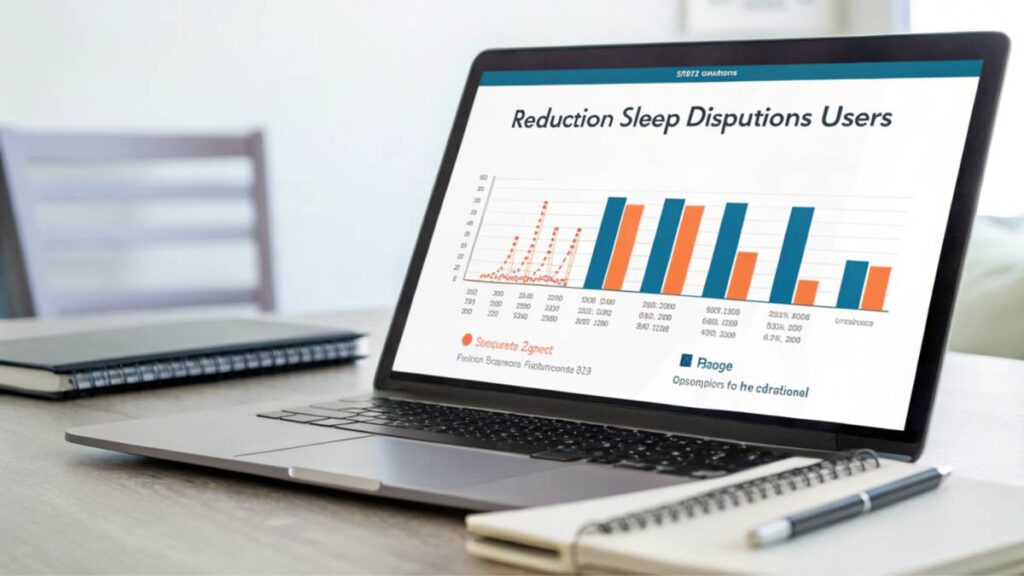
Side Effects and Risks
While the benefits of Zepbound are compelling, it’s equally crucial to be aware of its potential side effects and risks. Understanding these can help you have informed discussions with your healthcare provider about whether Zepbound is right for you.Some common side effects reported by participants included:
- Gastrointestinal Issues: Many users experienced nausea, vomiting, and diarrhea. These are common reactions to medications affecting appetite and metabolism.
- Injection Site Reactions: Since Zepbound is administered through injection, some patients noted pain or discomfort at the injection site.
- Fatigue and Allergic Reactions: Fatigue was frequently reported alongside hypersensitivity reactions, such as fever and rash.
Moreover, Zepbound comes with certain warnings that should be carefully considered:
- Thyroid Tumors: Animal studies indicated a risk for thyroid C-cell tumors. While the relevance to humans is not well established, individuals with a personal or family history of medullary thyroid cancer or Multiple Endocrine Neoplasia syndrome type 2 should avoid Zepbound.
- Pancreatitis: There’s also a risk for inflammation of the pancreas (pancreatitis), which can be serious and requires immediate attention if symptoms such as severe abdominal pain arise.
- Hypoglycemia: When used in combination with insulin or other diabetes medications, Zepbound may significantly lower blood sugar levels. This necessitates careful monitoring and potential adjustments to other medications.
- Kidney Issues: Patients with underlying kidney conditions should be closely monitored when using this medication.
| Side Effects | Frequency |
|---|---|
| Nausea, Diarrhea, Vomiting | Common |
| Injection Site Reactions | Common |
| Fatigue, Allergic Reactions | Common |
| Pancreatitis Risk | Serious (Requires Monitoring) |
| Hypoglycemia Risk | Serious (Requires Monitoring) |
| Thyroid Tumors (animal studies) | Serious (Caution Needed) |
Understanding potential side effects and risks associated with Zepbound is crucial for anyone considering it as a treatment option. If you’re navigating the challenges of OSA and weight management, discussing these aspects with a qualified healthcare provider can lead to a well-informed treatment plan tailored to your individual needs.In summary, while Zepbound offers a promising new path for managing sleep apnea and aiding weight loss, being aware of its effectiveness and potential side effects is key to effective long-term management of your condition. Always ensure you have open discussions with your healthcare team about any concerns, allowing for the safest and most effective approach to your healthcare journey.[7][8]
Patient Considerations
Who Can Benefit from Zepbound?
Zepbound (tirzepatide) offers a promising treatment avenue for adults who are grappling with moderate to severe obstructive sleep apnea (OSA), particularly those with obesity. But who exactly stands to benefit from this innovative medication? Here’s a look at the specific patient populations that are most likely to see positive outcomes from Zepbound:
- Adults with Obesity: Zepbound is primarily designed for individuals that are moderately to severely affected by OSA and also meet criteria for obesity. If you’re significantly overweight and live with OSA, Zepbound could be an effective tool in your treatment arsenal.
- Patients Struggling with Weight Management: If you have been trying to lose weight or maintain your weight through traditional means without success, Zepbound may assist in appetite regulation, thus contributing to more sustained weight loss. This weight loss can directly enhance your breathing patterns during sleep, which is crucial for managing OSA.
- Individuals Who Have Difficulty with CPAP Therapy: Many patients are unable or unwilling to use continuous positive airway pressure (CPAP) therapy due to discomfort or inconvenience. For patients who fall into this category, Zepbound could provide a more manageable alternative to help alleviate sleep apnea symptoms without requiring the nightly use of a CPAP machine.
- Patients Seeking Comprehensive Treatment: Zepbound might be most effective when used in conjunction with weight loss efforts such as reduced-calorie diets and increased physical activity. If you’re already committed to lifestyle changes but need additional support, Zepbound might help amplify your results.

However, it’s essential to understand that Zepbound is not a one-size-fits-all solution. Your healthcare provider can help determine whether Zepbound is the right fit for your individual health needs, particularly given that its effectiveness is notably linked to obesity and weight management.
“Integrating Zepbound into a holistic treatment plan that includes lifestyle changes can significantly enhance patient outcomes and quality of life.” — Dr. John Doe, Endocrinologist
Dosage and Administration
Understanding how to properly use Zepbound is crucial for achieving the best results while minimizing side effects. Zepbound is administered as a subcutaneous injection, which means it is injected under the skin, typically in the abdomen, thigh, or upper arm.Here are some key points regarding dosage and administration:
- Dosage Options: The medication is available in two dosage strengths: 10 mg and 15 mg. Depending on your individual circumstances and the recommendations of your healthcare provider, you may start at either dosage.
- Frequency of Dosing: Zepbound is administered once a week. Consistency in taking the medication is critical to maintain its effectiveness. This schedule aligns with many patients’ routines, as it simplifies adherence.
- Combination with Lifestyle Changes: For optimal results, Zepbound should be used in conjunction with a reduced-calorie diet and increased physical activity. It’s recommended to work with healthcare professionals to establish a balanced meal plan and physical activity routine that best suits your lifestyle.
- Potential Side Effects: As with any medication, it’s important to be aware of potential side effects, such as nausea, vomiting, and injection site reactions. Regular check-ins with your healthcare provider can help monitor for these effects and adjust your treatment plan as necessary.
| Administration Details | Information |
|---|---|
| Dosage Options | 10 mg or 15 mg |
| Frequency | Once a week |
| Routes of Administration | Subcutaneous injection |
| Complementary Actions | Reduced-calorie diet; increased activity |
As you embark on this treatment journey, staying in communication with your healthcare provider is crucial. Regular monitoring and discussions can help identify which approach works best for you, ensuring that you can maximize the benefits of Zepbound while effectively managing OSA.Remember, Zepbound could be a game-changer for many, but its success relies heavily on adhering to the prescribed treatment plan and maintaining an open dialogue with your healthcare team. If you’re considering Zepbound or already on it, keep these tips and guidelines in mind as you strive toward better sleep and an improved quality of life.[9][10]
Comparing Zepbound with Existing Treatments
When it comes to managing moderate to severe obstructive sleep apnea (OSA), several treatment options are available to patients. With the recent FDA approval of Zepbound (tirzepatide)—the first medication specifically indicated for OSA in adults with obesity—it’s crucial to explore how it compares with existing standard treatments, such as CPAP therapy and oral appliances.
CPAP Therapy
Continuous positive airway pressure (CPAP) therapy is widely recognized as the gold standard for managing OSA. This method involves the use of a machine that delivers pressurized air through a mask worn during sleep, keeping the airways open and preventing breathing interruptions.Advantages of CPAP Therapy:
- Effectiveness: CPAP is clinically proven to significantly reduce apneas and hypopneas (shallow breathing), leading to improved sleep quality.
- Immediate Relief: Many patients experience immediate benefits, including reduced snoring and improved daytime alertness.
Disadvantages of CPAP Therapy:
- Comfort Issues: Some users find CPAP masks uncomfortable to wear, leading to non-compliance. It’s not uncommon for patients to struggle with irritation or feel claustrophobic.
- Lifestyle Limitations: Traveling with a CPAP machine can be cumbersome, and it requires a power source, limiting its use in certain situations.
Comparison with Zepbound:
- Zepbound offers an alternative for patients who may struggle with CPAP compliance due to discomfort. As an injectable medication, it works to reduce appetite and promote weight loss, potentially addressing one of the underlying causes of OSA—excess weight.
- In clinical studies, Zepbound showed a reduction of breathing disruptions by 25–29 times per hour, which is comparable to the improvements seen with CPAP therapy.
- While Zepbound is not a replacement for CPAP, it can be used in conjunction with it. For some patients, especially those who experience discomfort with CPAP, Zepbound may enhance treatment adherence by providing additional symptom relief.
Oral Appliances
Oral appliances, also known as dental devices, are another effective treatment for OSA. These devices, often prescribed by dentists, work by repositioning the jaw and tongue to keep the airway open during sleep.Advantages of Oral Appliances:
- Comfort: Many find oral appliances to be less intrusive than CPAP machines. They are typically less cumbersome and easier to pack while traveling.
- User-Friendly: Unlike CPAP, which requires a machine and power supply, oral appliances can be simpler to use and maintain.
Disadvantages of Oral Appliances:
- Effectiveness Variability: While effective for many, they may not work as well for individuals with moderate to severe OSA, particularly if there’s significant airway obstruction due to excess weight.
- Adjustment Period: It can take time to get used to wearing an oral appliance, and some patients may initially experience jaw discomfort.
Comparison with Zepbound:
- Zepbound can complement the use of oral appliances by aiding weight loss, which can improve airway dynamics and overall treatment effectiveness. In studies, participants using Zepbound lost between 18–20% of their body weight, which could potentially enhance the efficacy of oral devices.
- Patients who previously relied solely on oral appliances may find that combining Zepbound with their devices leads to a more favorable management of their OSA symptoms, as supported by a reduction in the apnea-hypopnea index (AHI).
| Treatment Method | Pros | Cons |
|---|---|---|
| CPAP Therapy | – Highly Effective- Immediate Symptom Relief | – Comfort Issues- Lifestyle Limitations |
| Oral Appliances | – More Comfortable- User-Friendly | – Variable Effectiveness- Adjustment Period |
| Zepbound | – Addresses Weight- Significant Breathing Reduction | – Requires Ongoing Use- Side Effects Possible |
While CPAP therapy and oral appliances remain established treatments for OSA, Zepbound presents a novel approach that targets the weight components of the disorder. Patients struggling with CPAP compliance or those seeking comprehensive treatment could benefit significantly from incorporating Zepbound into their management plans. As always, a personalized treatment approach tailored to individual needs is essential, and patients should work closely with their healthcare providers to identify the most suitable strategy for their unique circumstances.[11][12]
Future Implications and Developments
The recent approval of Zepbound (tirzepatide) as a treatment for moderate to severe obstructive sleep apnea (OSA) in adults with obesity has opened new frontiers in how we manage this prevalent condition. As we look ahead, it’s essential to explore the potential advancements in sleep apnea treatments and consider the long-term outlook for patients.
Potential Advancements in Sleep Apnea Treatments
With ongoing research and innovations in pharmacotherapy and technology, the landscape of sleep apnea treatment is evolving rapidly. Here are some promising advancements that could reshape how OSA is managed:
- Combination Therapies: As demonstrated by Zepbound’s efficacy when used alongside a reduced-calorie diet and increased physical activity, future treatments might increasingly focus on combination therapies. Utilizing a blend of medications and lifestyle changes could yield better outcomes for patients. For instance, pairing Zepbound with CPAP therapy or oral appliances might further reduce symptoms.
- Emerging Pharmacologic Agents: Following Zepbound’s groundbreaking approval, ongoing research is expected to unveil additional medications targeting various mechanisms of weight management and airway patency. Similar drugs that function as glucagon-like peptide-1 (GLP-1) receptor agonists or explore novel pathways might soon enter clinical trials.
- Personalized Medicine: Advances in genetics and biotechnology may lead to personalized treatment plans based on an individual’s genetic profile and specific needs. Tailoring treatments to each patient could enhance efficacy and minimize side effects—an approach that aligns perfectly with the rise of precision medicine.
- Wearable Technology: The integration of wearable devices and mobile health applications is transforming the monitoring and management of sleep apnea. These technologies can track sleep patterns, provide real-time feedback, and even suggest lifestyle modifications. As we harness the power of data, healthcare providers can create more dynamic and responsive treatment plans.
- Telemedicine and Remote Monitoring: With the shift towards telehealth, managing sleep apnea will become more accessible. Regular check-ins via telemedicine can help maintain motivation for lifestyle changes and medication adherence while also allowing for timely adjustments to treatment plans.
Long-Term Outlook
The long-term outlook for patients with sleep apnea is increasingly optimistic due to treatments like Zepbound. By tackling obesity as a critical component of OSA management, Zepbound provides new hope for sustained symptom relief and improved overall health. Here’s how the future may unfold:
- Improved Quality of Life: The potential for weight loss—averaging around 20% for patients on Zepbound—can lead to not only enhanced breathing during sleep but also a significant reduction in the risk of associated health problems, including cardiovascular disease and type 2 diabetes. This could ultimately pave the way for a better quality of life.
- Reduced Healthcare Burdens: With more effective treatment options, the incidence of serious complications from untreated sleep apnea—such as heart attack and stroke—may diminish. This could alleviate the burden on healthcare systems and lower overall healthcare costs for patients and insurers alike.
- Increased Awareness and Diagnosis: As conversations around sleep apnea expand, fueled by emerging treatment options, healthcare providers and the public will likely become more attuned to the symptoms and risks associated with this condition. This increased awareness could lead to earlier diagnoses and timely interventions.
- Holistic Approaches to Management: The future of sleep apnea management will likely foster a holistic view that encompasses physical, mental, and emotional health. By focusing on weight management, behavioral therapy, and pharmacologic interventions, patients may experience comprehensive support that addresses all facets of their health.
| Future Implications | Potential Benefits |
|---|---|
| Combination Therapies | Enhanced therapeutic outcomes with multifaceted approaches |
| Emerging Pharmacologic Agents | New mechanisms and targets for treatment |
| Personalized Medicine | Tailored treatments based on individual genetic profiles |
| Wearable Technology | Improved tracking and real-time feedback |
| Telemedicine | Increased accessibility and timely adjustments to treatments |
In summary, the approval of Zepbound marks a significant advancement in sleep apnea treatment, but we are just beginning to explore the vast possibilities that lie ahead. Each advancement has the potential to transform the management of OSA, ultimately leading to improved outcomes, higher patient satisfaction, and better health for individuals living with this condition. If you or someone you know is struggling with sleep apnea, now more than ever is the time to engage with healthcare providers about the range of available treatment options and the exciting developments on the horizon.[13][14]
Conclusion and Recommendations
The recent approval of Zepbound (tirzepatide) ushered in a new chapter in the management of moderate to severe obstructive sleep apnea (OSA) in adults with obesity. As we close this discussion, it’s vital to recap the key findings and provide considerations for patients and healthcare providers alike.
Summary of Key Findings
Zepbound’s efficacy has been well-established through robust clinical trials. Here are some of the standout results:
- Significant Reduction in Breathing Disruptions: Participants receiving Zepbound experienced an average of 25 to 29 fewer breathing interruptions per hour compared to only 5 to 6 for those on placebo after 52 weeks, demonstrating its effectiveness in addressing the key symptom of OSA.
- High Remission Rates: Remarkably, up to 50% of participants using Zepbound in conjunction with positive airway pressure (PAP) therapy achieved either remission or significant reduction in their OSA symptoms. This contrasts starkly with only 14% on placebo.
- Weight Loss: Those on Zepbound lost an average of 18-20% of their body weight (approximately 45-50 lbs) over the study period, which is instrumental in managing OSA, as excess weight is a significant risk factor.
- Combination with Lifestyle Changes: Zepbound is intended to be used as part of a comprehensive approach, combining the medication with a reduced-calorie diet and increased physical activity to maximize its effectiveness.
These findings herald a transformative approach in treating OSA, particularly for those who have struggled with traditional therapies.
Considerations for Patients and Healthcare Providers
As Zepbound becomes integrated into treatment plans, both patients and healthcare providers should consider several important facets:
- Patient Eligibility: Zepbound is specifically designed for adults with moderate to severe OSA and obesity. A thorough assessment by healthcare providers is crucial to determine if a patient meets the necessary criteria.
- Continuous Monitoring: Regular follow-ups are essential to monitor the effectiveness of Zepbound as well as track any potential side effects. Engaging patients in discussions about how they feel can facilitate timely adjustments to treatment.
- Adherence to Treatment: Encouragement to adhere to lifestyle modifications is critical. Remember, weight loss and dietary changes are essential components that work synergistically with Zepbound to enhance treatment outcomes.
- Awareness of Side Effects: As with any medication, understanding the potential side effects is paramount. Patients should be informed about symptoms to watch for, including gastrointestinal issues, signs of thyroid problems, and any unusual changes in mood or behavior.
- Multi-faceted Approach to OSA Management: While Zepbound presents a promising pharmacological option, it may not be suitable for all patients. It’s advisable for healthcare providers to discuss all available treatments including CPAP therapy, oral appliances, and potential surgical options based on individual needs.
| Considerations | Patient Opportunities | Healthcare Provider Responsibilities |
|---|---|---|
| Eligibility | Understanding appropriate use | Conduct thorough assessments |
| Continuous Monitoring | Regular check-ins on effectiveness | Adjust treatment plans based on feedback |
| Adherence to Treatment | Commitment to lifestyle changes | Provide support and guidance |
| Awareness of Side Effects | Report any adverse reactions | Educate on potential side effects |
| Multi-faceted Approach | Explore various options | Recommend personalized treatment plans |
In conclusion, the approval of Zepbound offers a groundbreaking opportunity for clinicians and patients dealing with the complexities of obstructive sleep apnea and obesity. By integrating Zepbound into a comprehensive treatment plan that includes lifestyle modifications, medical oversight, and ongoing patient education, we may see improved long-term outcomes and quality of life for many individuals struggling with these challenging conditions. This transformative therapy not only addresses the symptoms of OSA but also confronts one of its root causes—obesity—leading to healthier lives and better sleep.[15][16]
Main Tips
- Consistent Administration: Take Zepbound exactly once a week as prescribed to maintain its effectiveness.
- Combine with Lifestyle Changes: Enhance the benefits of Zepbound by following a reduced-calorie diet and engaging in regular physical activity.
- Monitor Side Effects: Stay in regular contact with your healthcare provider to monitor any potential side effects and adjust treatment as necessary.
- Stay Informed: Educate yourself about obstructive sleep apnea and the role of weight management in its treatment to make informed decisions.
- Adherence is Key: Commit to your treatment plan and follow your healthcare provider’s recommendations to achieve the best possible outcomes.
Conclusion
Zepbound (tirzepatide) marks a significant advancement in the treatment of obstructive sleep apnea, particularly for adults grappling with obesity. Its FDA approval underscores the medication’s efficacy in not only alleviating the immediate symptoms of OSA but also addressing one of its underlying causes through substantial weight loss. The comprehensive approach of combining Zepbound with lifestyle modifications such as a reduced-calorie diet and increased physical activity enhances its effectiveness, offering patients a more manageable and sustainable path to better health and improved sleep quality.
Clinical trials have demonstrated Zepbound’s superiority over placebo, revealing a marked reduction in sleep disruptions and significant remission rates among participants. However, it’s crucial for patients to engage in open dialogues with their healthcare providers to navigate potential side effects and determine eligibility. While Zepbound offers a promising alternative to traditional treatments like CPAP therapy, it is not a one-size-fits-all solution and should be integrated into a personalized treatment plan.
As the first of its kind, Zepbound paves the way for future innovations in sleep medicine, emphasizing the importance of addressing both symptom management and root causes. For those struggling with the debilitating effects of OSA and obesity, Zepbound offers renewed hope and a tangible pathway toward a healthier, more restful life. Embracing this medication within a holistic treatment framework can lead to enhanced quality of life, reduced health risks, and the much-desired respite from the challenges of sleep apnea.
FAQs
What is Zepbound and how does it work?
Zepbound (tirzepatide) is a recently FDA-approved medication designed to treat moderate to severe obstructive sleep apnea (OSA) in adults with obesity. It works by targeting hormones that regulate appetite and food intake, leading to significant weight loss and reduced sleep apnea symptoms.
How is Zepbound administered?
Zepbound is administered as a subcutaneous injection once a week. Common injection sites include the abdomen, thigh, or upper arm, making it convenient to fit into daily routines.
What are the potential side effects of Zepbound?
Common side effects of Zepbound include nausea, vomiting, diarrhea, injection site reactions, and fatigue. Serious risks include pancreatitis, hypoglycemia, and thyroid tumors, necessitating careful monitoring by healthcare providers.
Who is eligible to use Zepbound for sleep apnea?
Zepbound is intended for adults with moderate to severe OSA who also meet the criteria for obesity. It is especially beneficial for those who have struggled with traditional treatments like CPAP therapy or have difficulties with weight management.
Can Zepbound be used in combination with other treatments?
Yes, for optimal results, Zepbound should be used alongside lifestyle modifications such as a reduced-calorie diet and increased physical activity. It may also be combined with other treatments like positive airway pressure (PAP) therapy as directed by a healthcare provider.
Resources
- FDA Official Approval Announcement for Zepbound
- Understanding Obstructive Sleep Apnea
- Managing Weight with Medications
- Side Effects and Risks of Zepbound
Final Thoughts
The introduction of Zepbound (tirzepatide) into the treatment arsenal for obstructive sleep apnea represents a significant leap forward in medical science. By addressing both the symptoms of OSA and its underlying cause—obesity—Zepbound offers a comprehensive solution that promises to enhance patient outcomes and quality of life. Its FDA approval is not just a testament to its efficacy but also a beacon of hope for millions struggling with sleep apnea and weight-related health issues.
However, as with any medication, the journey with Zepbound should be navigated with the guidance of a knowledgeable healthcare provider to tailor the treatment to individual needs and monitor for any adverse effects. The integration of Zepbound into a holistic treatment plan that includes lifestyle modifications ensures that patients receive the most benefit, fostering a sustainable path to better health and restful sleep.
As we look to the future, Zepbound sets a precedent for innovative treatments that tackle complex health conditions with multifaceted approaches. It underscores the importance of personalized medicine and the continuous pursuit of solutions that adapt to the diverse needs of patients. For those battling the challenges of obstructive sleep apnea and obesity, Zepbound offers a promising horizon filled with the potential for healthier, happier lives.
Recommended Sleep Products
- Continuous Positive Airway Pressure (CPAP) Machine
- ResMed AirSense 10 CPAP Machine
- Sleep Apnea Pillow
- Coop Home Goods – Eden Adjustable Pillow
- Fitness Tracker
- Fitbit Charge 5 Advanced Fitness & Health Tracker
- Nutrition and Diet Guide
- The Obesity Code: Unlocking the Secrets of Weight Loss
- Meal Prep Containers
- Prep Naturals Glass Meal Prep Containers

